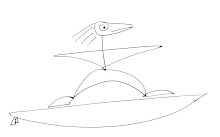U.S. Department of Labor Office of Public Affairs Washington, D.C. |
| EMPLOYMENT AND TRAINING ADMINISTRATION | USDL 09-539-NAT |
| Program Contact: | TRANSMISSION OF MATERIAL IN THIS |
| Scott Gibbons (202) 693-3008 | RELEASE IS EMBARGOED UNTIL |
| Tony Sznoluch (202) 693-3176 | 8:30 A.M. (EDT), THURSDAY |
| Media Contact : | May 21, 2009 |
| (202) 693-4676 | |
UNEMPLOYMENT INSURANCE WEEKLY CLAIMS REPORT
SEASONALLY ADJUSTED DATA
In the week ending May 16, the advance figure for seasonally adjusted initial claims was 631,000, a decrease of 12,000 from the previous week's revised figure of 643,000. The 4-week moving average was 628,500, a decrease of 3,500 from the previous week's revised average of 632,000.
The advance seasonally adjusted insured unemployment rate was 5.0 percent for the week ending May 9, an increase of 0.1 percentage point from the prior week's unrevised rate of 4.9 percent.
The advance number for seasonally adjusted insured unemployment during the week ending May 9 was 6,662,000, an increase of 75,000 from the preceding week's revised level of 6,587,000. The 4-week moving average was 6,480,500, an increase of 131,000 from the preceding week's revised average of 6,349,500.
The fiscal year-to-date average for seasonally adjusted insured unemployment for all programs is 5.071 million.
The advance number of actual initial claims under state programs, unadjusted, totaled 536,588 in the week ending May 16, a decrease of 33,824 from the previous week. There were 319,694 initial claims in the comparable week in 2008.UNADJUSTED DATA
The advance unadjusted insured unemployment rate was 4.6 percent during the week ending May 9, unchanged from the prior week. The advance unadjusted number for persons claiming UI benefits in state programs totaled 6,189,434, a decrease of 2,110 from the preceding week. A year earlier, the rate was 2.1 percent and the volume was 2,847,329.
Extended benefits were available in Alaska, Arizona, Arkansas, California, Connecticut, the District of Columbia, Idaho, Illinois, Indiana, Kentucky, Maine, Massachusetts, Michigan, Minnesota, Montana, Nevada, New Jersey, North Carolina, Ohio, Oregon, Pennsylvania, Puerto Rico, Rhode Island, South Carolina, Vermont, Washington, and Wisconsin during the week ending May 2.
Initial claims for UI benefits by former Federal civilian employees totaled 1,174 in the week ending May 9, a decrease of 44 from the prior week. There were 1,751 initial claims by newly discharged veterans, an increase of 67 from the preceding week.
There were 15,868 former Federal civilian employees claiming UI benefits for the week ending May 2, a decrease of 553 from the previous week. Newly discharged veterans claiming benefits totaled 28,542, an increase of 21 from the prior week.
States reported 2,268,367 persons claiming EUC (Emergency Unemployment Compensation) benefits for the week ending May 2, an increase of 111,851 from the prior week. EUC weekly claims include both first and second tier activity.
The highest insured unemployment rates in the week ending May 2 were in Oregon (7.4 percent), Michigan (6.9), Puerto Rico (6.6), Nevada (6.4), Pennsylvania (6.3), Wisconsin (6.2), Idaho (6.0), California (5.6), Alaska (5.5), New Jersey (5.4), and North Carolina (5.4).
The largest increases in initial claims for the week ending May 9 were in Michigan (+16,817), North Carolina (+3,783), Virginia (+2,871), Kentucky (+2,768), and Pennsylvania (+2,444), while the largest decreases were in California (-10,052), Wisconsin (-1,691), Kansas (-1,415), Oklahoma (-1,084), and Washington (-843).


No comments:
Post a Comment